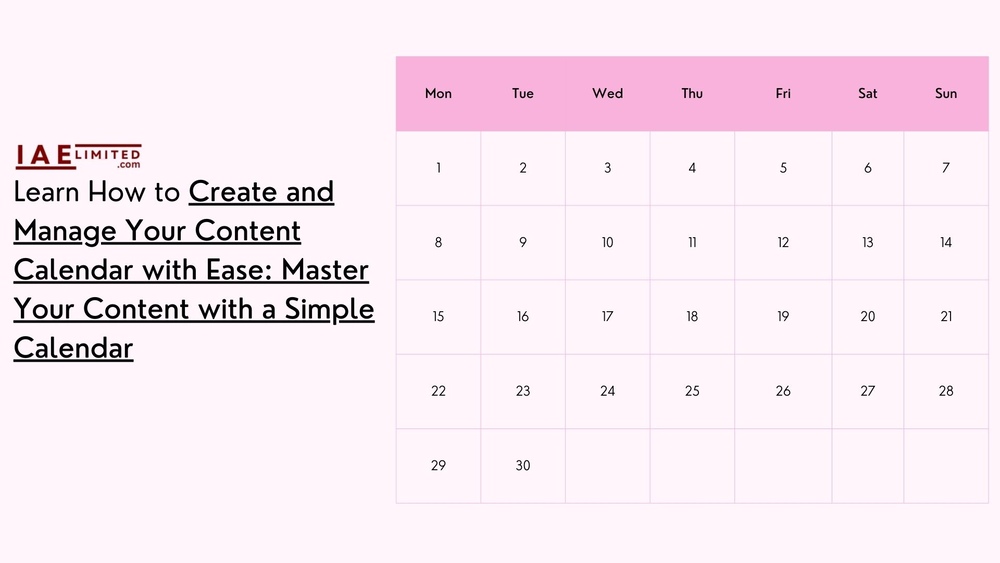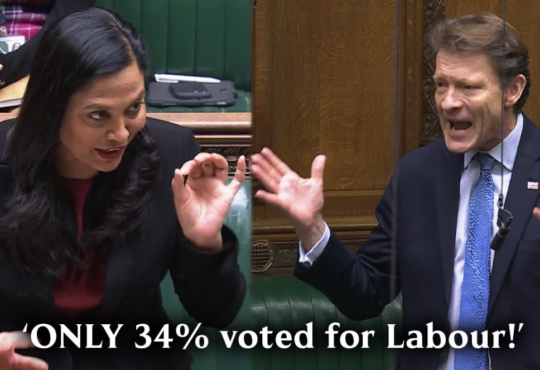
Staying organized at work is crucial, one effective way to maintain organization is by using a content calendar, especially when juggling multiple tasks and deadlines. This tool helps you plan, schedule, and track your content, ensuring that everything runs smoothly.
In this article, we’ll explore how to create a content calendar and how it can help you stay organized, just like how our recent article will walk you through Advanced SEO Strategies, which is a comprehensive guide for SEO experts.
What is a Content Calendar?
Table of Contents
A content calendar is a tool used to plan and schedule content in advance. This could include blog posts, social media updates, videos, and more. By outlining your content in a calendar format, you can see what needs to be done and when, making it easier to manage your workload.
There are different types of calendars, such as editorial calendars for blog posts, social media calendars for social media updates, and SEO-focused calendars that align with your search engine optimization strategies.
Benefits of Using a Content Calendar
Using a content calendar offers several benefits:
- Streamlined Content Creation: It helps you organize your ideas and plan ahead, so you’re not scrambling for content at the last minute.
- Enhanced Team Collaboration: A shared calendar allows team members to see what’s planned and contribute their ideas, fostering collaboration.
- Consistent Content Output: By scheduling content in advance, you ensure a steady flow of content, keeping your audience engaged.
How to Organize a Content Calendar
Organizing a content calendar involves several steps:
- Identify Your Goals: Start by determining what you want to achieve with your content. This could be increasing website traffic, boosting engagement on social media, or improving your SEO rankings.
- Choose Your Platform: Select a platform that suits your needs. This could be a simple spreadsheet, a tool like Trello, or a dedicated content calendar software.
- Outline Your Content: Plan your content by outlining topics, assigning dates, and determining who will create each piece.
- Monitor and Adjust: Regularly review your calendar to ensure everything is on track and make adjustments as needed.
What is a Content Calendar in SEO?
An SEO-focused content calendar is designed to align your content creation with your SEO strategy. It helps you plan content around keywords, search trends, and your target audience’s interests. By doing this, you can improve your website’s visibility in search engines and drive more organic traffic.
Free Tools to Create a Content Calendar
There are several free tools you can use to create a content calendar:
- Google Sheets: A versatile tool that allows for easy collaboration. You can create a calendar template and share it with your team. Hubspot has published a post on how to How to Make Perfect Content Calendars in Google Sheets.
- Trello: A visual tool that uses boards, lists, and cards to organize tasks. It’s great for tracking content progress.
- Asana: A project management tool that lets you create calendars, assign tasks, and monitor deadlines.
Each of these tools has its pros and cons, so choose the one that best fits your needs.
How to Create a Content Calendar and Stay Organized at Work
Creating a content calendar is just the first step. To stay organized, follow these tips:
- Set Clear Goals: Know what you want to achieve with your content and plan accordingly.
- Manage Your Time: Allocate time for content creation, editing, and scheduling. Use time management tools if needed.
- Keep Your Team Aligned: Regularly update your team on the content schedule and ensure everyone knows their responsibilities.
Creating a Content Calendar Template
A content calendar template is a pre-designed layout that you can use to plan your content. Here’s how to create one:
- Include Key Elements: Your template should include columns for dates, content titles, formats (e.g., blog post, video), and platforms (e.g., website, social media).
- Customize for Your Needs: Tailor the template to fit your content strategy. For example, if you focus heavily on social media, include specific sections for each platform.
How to Create a Content Calendar in Excel
Creating a content calendar in Excel is simple and effective:
- Open a New Spreadsheet: Start by opening a new Excel sheet.
- Create Headers: Add headers for dates, content titles, content types, platforms, and assigned team members.
- Fill in the Details: Populate your calendar with upcoming content, deadlines, and other important details.
Excel is a great option because it’s easy to use and highly customizable.
How to Create a Content Calendar in Canva
Canva is a design tool that allows you to create visually appealing calendars:
- Choose a Template: Canva offers several calendar templates to choose from.
- Customize Your Design: Add your brand’s colors, fonts, and other design elements to make the calendar your own.
- Add Content Details: Fill in your content plans, deadlines, and other important information.
Canva’s templates are easy to use and can make your content calendar more visually engaging.
Content Calendar Examples
Looking at examples can inspire your content calendar:
- Editorial Calendars: Many blogs use editorial calendars to plan posts months in advance.
- Social Media Calendars: Brands often use social media calendars to schedule posts and campaigns across multiple platforms.
- SEO Calendars: SEO-focused calendars are used to plan content around keywords and search trends.
Analyzing these examples can help you understand how to structure your own calendar.
How to Create a Content Calendar for Social Media
Social media content calendars are essential for maintaining a consistent presence online:
- Identify Your Platforms: Determine which social media platforms are most relevant to your audience.
- Plan Your Content: Decide on the type of content you’ll post (e.g., images, videos, links) and schedule it in advance.
- Use Scheduling Tools: Tools like Hootsuite or Buffer can help you automate posting and keep your calendar on track.
Content Calendar Template Google Sheets
Google Sheets is a powerful tool for creating collaborative content calendars:
- Create a New Sheet: Start by opening a new Google Sheet.
- Design Your Template: Add columns for dates, content, platforms, and other relevant details.
- Share with Your Team: Google Sheets allows for real-time collaboration, making it easy to keep everyone on the same page.
You can also find pre-made templates online that you can adapt to your needs.
Difference Between a Content Plan and a Content Calendar
While a content plan outlines your overall content strategy, a content calendar is a tool used to execute that strategy:
- Content Plan: Focuses on long-term goals, target audience, and content themes.
- Content Calendar: Details the specific content pieces and when they’ll be published.
Both are essential for a successful content strategy, but they serve different purposes.
What Should Be in a Content Calendar?
A comprehensive content calendar should include:
- Dates and Deadlines: Clearly mark when content is due and when it will be published.
- Content Titles and Formats: Include the title of each piece of content and the format (e.g., blog post, video).
- Assigned Team Members: Indicate who is responsible for creating, editing, and publishing the content.
The Structure of a Content Calendar
An effective content calendar has a clear structure:
- Planning Section: Outlines content ideas and strategies.
- Scheduling Section: Details when and where content will be published.
- Tracking Section: Monitors the performance of published content.
This structure ensures that your content creation process is organized and efficient.
Three Main Components of an Effective Content Calendar
A successful content calendar includes:
- Planning: Outline your content strategy and identify key themes.
- Scheduling: Determine specific dates for content creation and publication.
- Tracking: Monitor content performance to see what works and what doesn’t.
These components help you maintain a consistent and effective content strategy.
Why Create a Content Calendar?
Creating a content calendar offers numerous benefits:
- Organization: It helps you stay on top of deadlines and manage your workload.
- Consistency: Ensures a steady flow of content, keeping your audience engaged.
- Strategic Planning: Allows you to align content with business goals and marketing strategies.
Common Tools for Creating Content Calendars
There are several tools available for creating content calendars:
- Airtable: Combines the power of a database with the simplicity of a spreadsheet.
- CoSchedule: A dedicated content calendar tool with robust scheduling features.
- Trello: A flexible tool that can be customized to fit your content planning needs.
Choosing the right tool depends on your team’s workflow and your content strategy.
How to Create a Content Calendar in Microsoft Word
Creating a content calendar in Microsoft Word is simple and straightforward:
- Open a New Document: Start with a blank document in Word.
- Create a Table: Insert a table with columns for dates, content titles, and other details.
- Fill in Your Content: Populate the table with your content plans and deadlines.
While Word isn’t as flexible as other tools, it can be a good option for small teams or solo content creators.
FAQs: Answering Common Questions About Content Calendars
What is the best social media content calendar tool?
- The best tool depends on your needs, but popular options include Hootsuite, Buffer, and CoSchedule.
How do I maintain a content calendar effectively?
- Regularly review and update your calendar, and use project management tools to keep track of deadlines.
Can I integrate content calendars with other marketing tools?
- Yes, many calendar tools can integrate with other platforms like Google Analytics
, email marketing tools, and social media scheduling tools.
What is the best way to update and revise a content calendar?
- Keep your calendar flexible and make adjustments based on performance data and changing priorities.

In Conclusion
A content calendar is a powerful tool for staying organized and maintaining a consistent content strategy. By following the steps outlined in this guide, you can create an effective calendar that keeps your team aligned and your content flowing smoothly. Stay organized, plan ahead, and watch your content efforts pay off!





